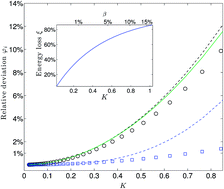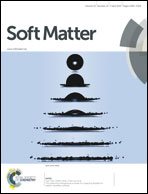Hertz beyond belief
Abstract
We examine the validity of Hertz's linear elastic theory for central collisions of spheres using a viscoelastic model. This model explains why Hertz's theory is accurate in predicting the collision time and maximum contact area even when 40% of the kinetic energy is lost due to viscous dissipation. The main reason is that both the collision time and maximum contact area have a very weak dependence on the impact velocity. Moreover, we show that colliding objects exhibit an apparent size-dependent yield strength, which results from larger objects dissipating less energy at a given impact velocity.


 Please wait while we load your content...
Please wait while we load your content...